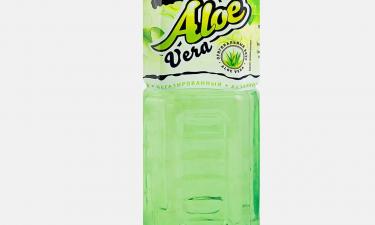Recall of Chinese-made toys draws attention to smaller toymakers
Saws clatter on the workshop floor, where craftsmen stamp out the rounded sides of future red toy pushcar and slice dozens of dragon figures out of a half-meter (2-foot) long dowel.

One building over, large drums rumble, shaking hundreds of wooden grasping rings beneath a steady drip of water-based lacquer. The process, which takes 10 hours - and another eight if the wood is colored - renders the rings smooth, shiny and safe for curious young mouths.
With about 80 percent of all toys sold in the U.S. made in China, German toy maker Haba knows it supplies a tiny market from its base in Bavaria. But the recall of millions of Chinese-made toys tainted with lead-laced paint has brought more attention to smaller European toymakers that stress natural and safe materials - if parents are willing to pay the price.
Mattel Inc., the U.S.' largest toymaker, announced a worldwide recall Tuesday of 18 million items such as dolls and action figures because of lead paint and tiny magnets that children could swallow. That followed the company's recall of 1.5 million Chinese-made Fisher-Price toys because of possible lead-paint hazards, and came after other issues with Chinese-made products.
"It's scary. First cat food and dog food, and now the kids' toys," said Whitney Settle, of Petroleum, West Virginia. "I have a 2-year-old boy who chews on everything. I doubt I am going to buy (Mattel) anymore - or it's going to make me look twice."
While few toys in Germany were affected by the first recall, more than a million were involved in the second round.
Toy experts say that European makers adhere to higher safety standards than in the U.S., and many of the companies - ranging from Lego in Denmark, Brio AB in Sweden and Haba or Selecta in Germany - stress that their in-house safety standards exceed the industry norms.
Customers have become noticeably more careful, said Thomas Brautigam, chief executive of Brio, which is known for its wooden toys.
"Since the end of June we've noted a much larger awareness among our customers," he said. "There are a lot of questions and they are seeking out safe and quality products to a much larger extent."
While Brio maintains some of its toy production in Europe, Brautigam said most of its production lines are - like other companies - in southern China, where costs are demonstrably lower.
That's a move that Haba, a division of the family-run Habermass GmbH, said it won't consider.
The company - best known for its brightly colored wood infant rings and grasping toys, as well as colorful board games such as "Animal upon Animal," or "Tier auf Tier" that have become increasingly popular in the United States - reported sales of 238 million EUR (US$321 million) in 2006. That compares to US$5.65 billion (4.21 billion EUR) for Mattel.
Although Haba is currently in talks with Babies-R-Us about the possibility of having the retailer carry some of its infant toys, the company decided last year against a deal to supply discount retailer Target Corp., which has about 1,500 U.S. stores.
"We are not interested in the mass market," said Christian Vollmer, who is responsible for Haba sales to the U.S. market. "That is not our clientele."
But the process Haba takes comes at a price, and Vollmer concedes the company had to wage an intense marketing campaign to break into the U.S. market, where the average Haba board game sells for between US$35 and US$39 - roughly US$10 more than the average game.
Yet demand is there, as games accounted for 35 percent of the company's exports in 2006 and is growing. Haba's overall sales nearly doubled since 2001, a year before the company changed its strategy in the U.S. market.
In Bad Rodach, a spa town of 6,500 people near the former border with East Germany, long rows of raw beech timber dry in metal sheds beside one of three buildings housing the production facilities where nearly all of Haba's 1,400 employees work.
"With colors, it is very important that no corners are cut in the name of saving money," said Matthias Loehnert, responsible for toy safety. "For years, we have worked together with the same company, and developing a relationship with them is important."
That means when the knight or princess for a new game needs a particular shade, Loehnert and his staff visit the supplier to collaborate on finding a color that is as attractive as it is safe.
The same care goes into cutting and polishing the wood, boring holes to string delicate wooden tulips onto a child's necklace, or stamping the smile onto a crocodile.
"It requires a lot of handwork," Loehnert said. "Of course we use machines, but there is a limit to how useful they can be."
Subscribe to Pravda.Ru Telegram channel, Facebook, RSS!




